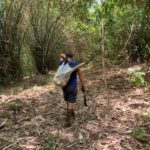Four species of yam are commonly grown and used for food in Papua New Guinea – but often naming in villages and naming by scientists do not agree. Many village people regard potato yam and 5-leaflet yam as varieties of greater yam. All yams have long creeping vines that wind around sticks.
Tok Pisin language: Yam tru; Mami. Scientific names:


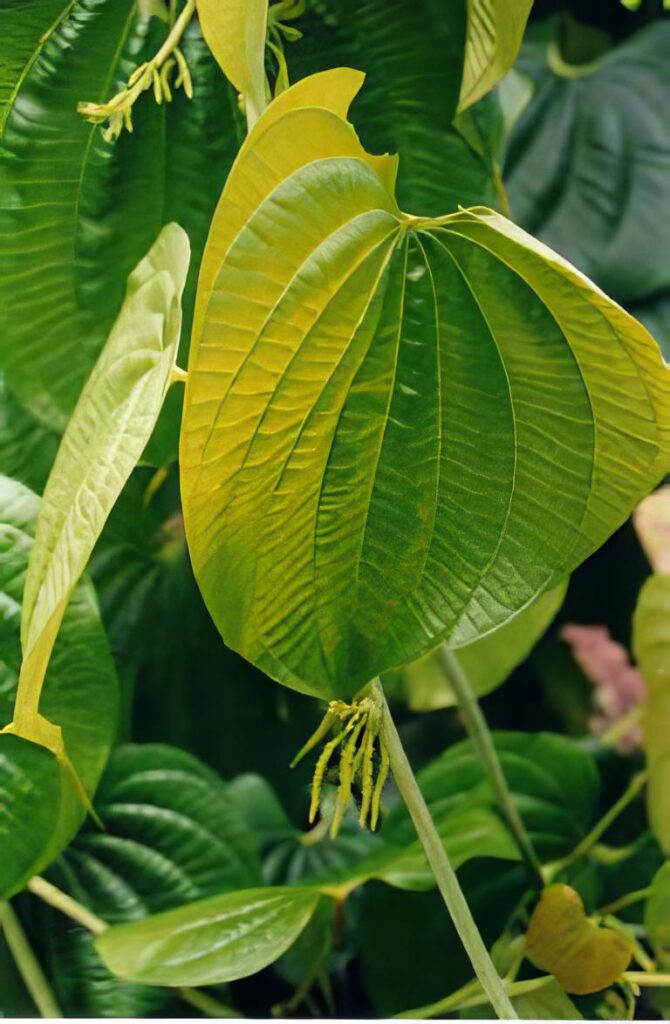
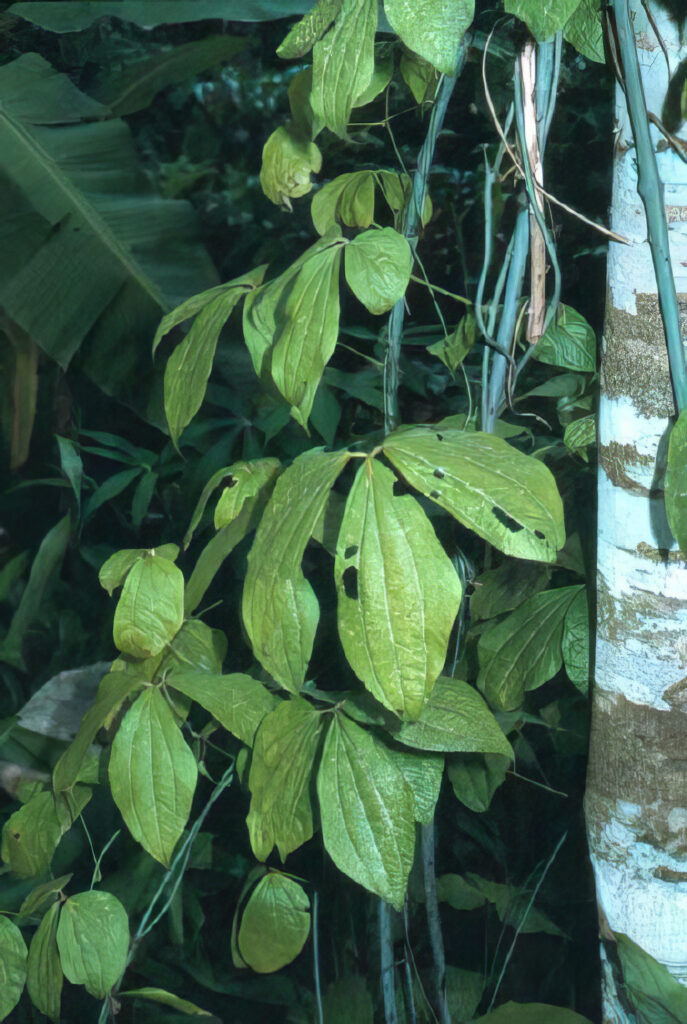
Greater yam
The greater yam has a stem with wings on the sides making it square. The heart-shaped leaves are in pairs along the vine. Under the ground, it normally produces one fairly large tuber. These tubers can be many different shapes.



Greater yam has a long angular vine. The stems are square and twine to the right around support sticks. The stem does not have spines. It is often coloured green or purple. The leaves are heart-shaped and borne in pairs along the vine. The leaves vary in shape, size and colour with different varieties. Leaves can be 10-30 cm long by 5-20 cm wide. The leaf stalk is 6-12 cm long. The flowers occur in the axils of the upper leaves. The male flowers are in small heads along branched stalks. These can be 25 cm long and green. The female flowers are in shorter spikes.
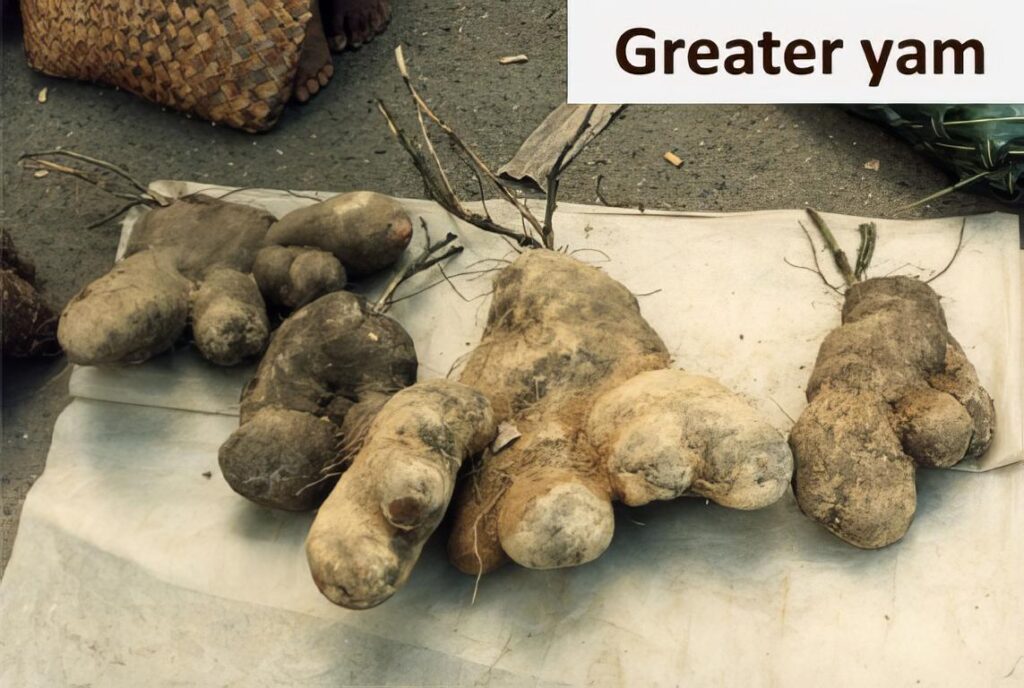
Many cultivated varieties do not produce fertile seeds. The fruit is 3-winged and 2.5 cm long by 3.5 cm wide. The seeds when they occur have wings right around them. One large but often irregular-shaped tuber occurs under the ground. A very large number of different varieties occur. The tubers can vary in shape, size, colour, texture and other ways. Some varieties produce bulbils along the vine.
Favorable growing conditions
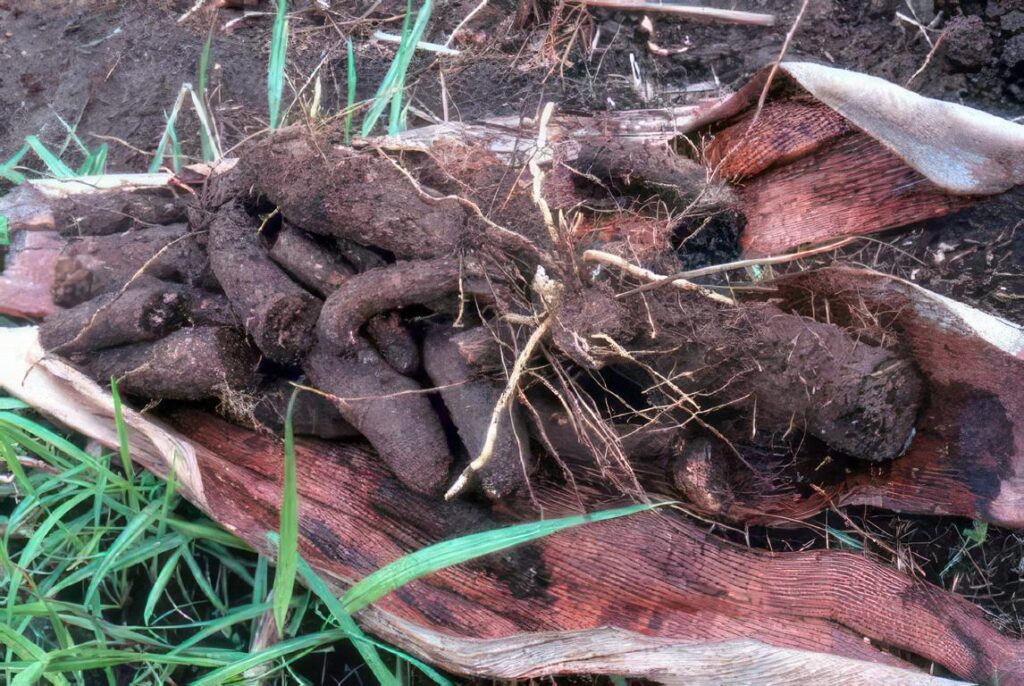
It grows from sea level up to about 1800 m in the tropics. Yams are most important in seasonally dry areas. They need well-drained soil, and it has to have reasonable fertility. The temperature maximum is >30°C while the minimum is 20°C. The optimum temperature range is 25-30°C. Rainfall is often seasonal in yam areas and the maximum to be needed is 14-20 weeks of rain with an optimum of 1,150 mm during the growing season. Yams can tolerate drought but give maximum yields with high rainfall. The critical rain period is during the first 5 months. Light influences tuber growth. A continuous exposure of tubers to light significantly reduces tuber yields. Day length – Yams are influenced by photoperiod. Short days (less than 10-11 hours) favours tuber development. It suits hardiness zones 10-12.
In most places, the yam growth and maturity fit in with seasonal rainfall patterns. They are mostly planted just before the first rains where a 8-10 month rainy season exists and give better yields in 6-8 month rainy season areas when planted 3 months before the rains. Earlier planting requires a larger sett size to withstand drying out.
Germination and soil requirement
Pre-germination of tubers that are cut and stored in shady places gives improved yields over tubers left whole and then cut into setts at planting. Because yam tubers have a period of dormancy, tubers do not normally commence regrowth for up to 5-6 months. This means they store better but there is a delay before they can be replanted. Dormancy can be broken using Calcium carbide treatment for 5 hours or by covering tubers with leaves of Croton aromaticus or Averrhoea bilimbi.
Yams are demanding in their nutrient requirements and are therefore often planted first in rotations. They need fertile free draining soil. They cannot tolerate water logging. In drier grassland areas mulching the mounds at planting has been found to improve establishment and yield.
In most places in Papua New Guinea, the Greater yam is called yam tru in Tok Pisin. At Madang and along the Sepik coast it is called mami.
It is not easy to know all the different varieties of yams but some rules are fairly often true. These rules can help a little bit to understand the types of yam tru.
Some guidelines about varieties of Greater yam
- Yams that are red inside are normally red at the top of the stalk that holds the leaf.
- Plants with several stems near the ground often have tubers that are branched. They sprout more easily.
- The more the young stem branches, the less deep the tubers are in the ground.
- Leaves that are fatter and shorter indicate fatter yams, often angular in shape and with surface roots.
Lesser yam



The Lesser yam is called mami in Tok Pisin in most areas of Papua New Guinea except Madang and the Sepik coast. It has a round thorny vine and a smaller more rounded leaf. The leaves are borne singly along the vine. Under the ground, there is a clump of tubers. But there are also some very sharp thorns just under the ground, so be careful! The tubers again vary in shape, size and colour. One of the most noticeable differences between kinds is the number of roots or hairs over the surface of the tubers.
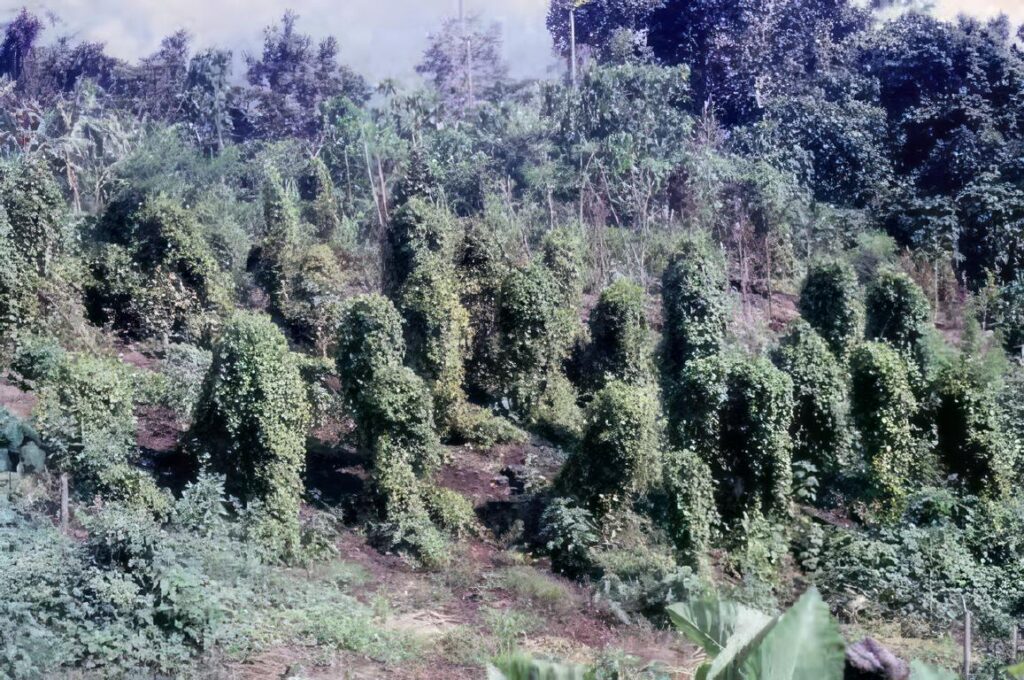
These are some of the kinds from Dreikiker at East Sepik. They were described by Dr. B. Allen at the 1981 Food Crops Conference.
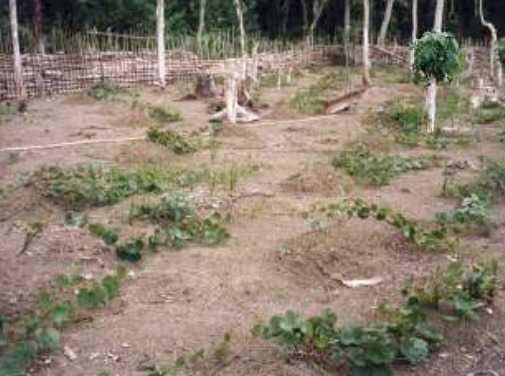
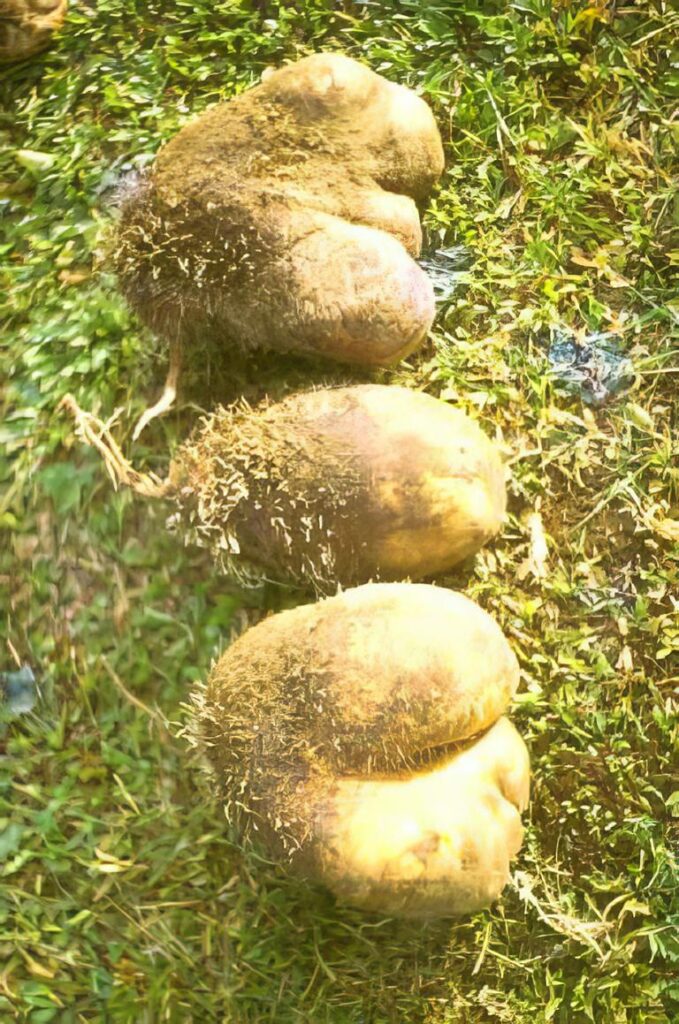

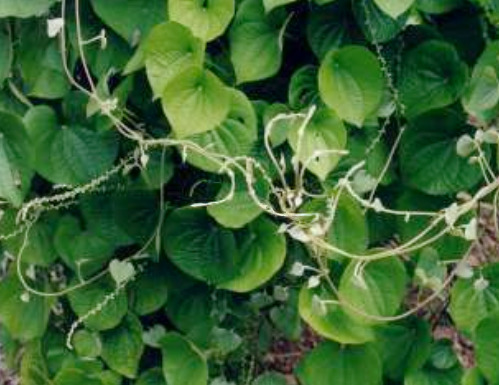

Potato yam
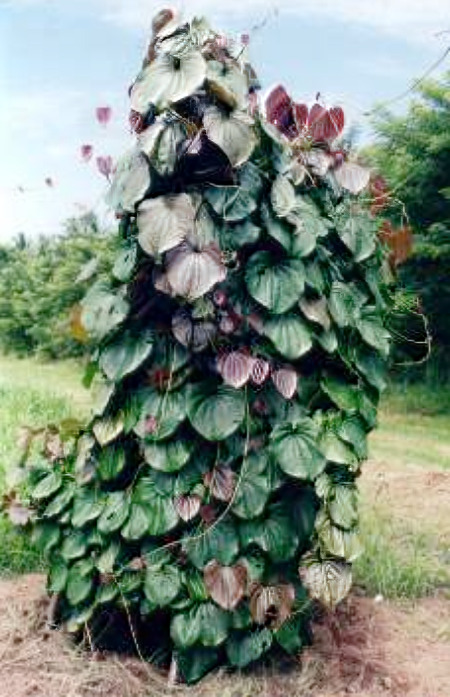


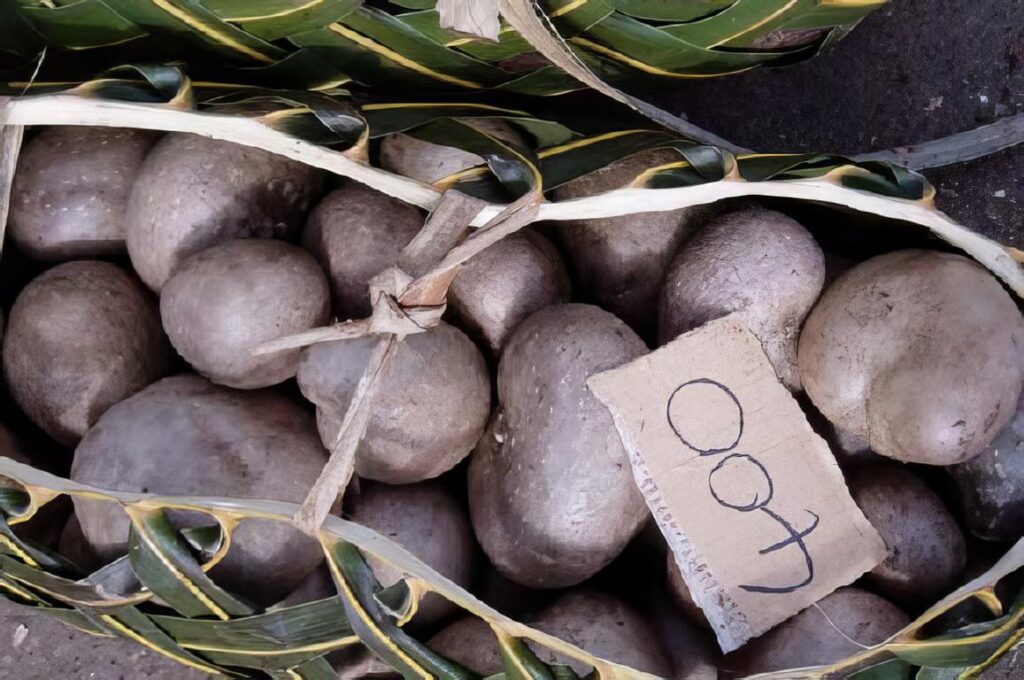

This yam has a very long smooth vine that often climbs up trees, especially near where the grassland and forest meet. Along the stem, it produces round or lumpy potato-like aerial tubers. (bulbils) They are in a branch where a leaf stalk joins the stem. There is also a tuber under the ground. Some people eat the aerial tuber and plant the tuber that is under the ground. Other people eat the underground tuber and plant the aerial tubers. This may depend on varieties.
Five leaflet yam
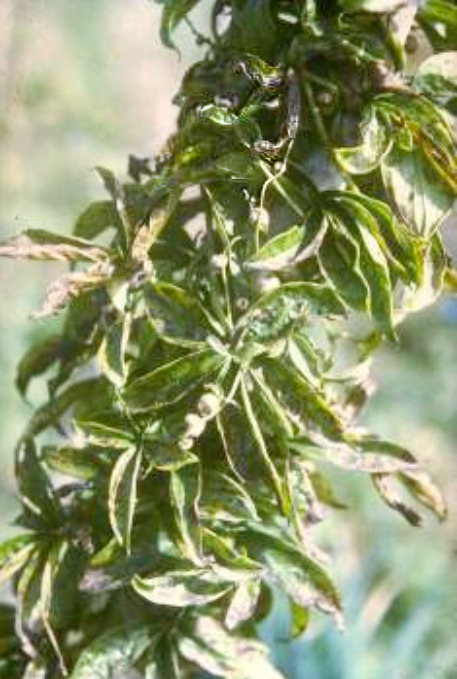
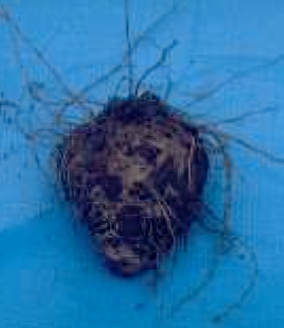

This yam has a leaf that is divided like the fingers on your hand. The number of leaflets can vary between 3 and 7 but there are mostly five. The leaves look a bit like cassava, but they grow on a long vine that winds up a stick. There are also wild types that grow in the bush. This yam often has small aerial tubers (bulbils) along the vine.
Where do yams grow?
Most yams are truly tropical plants, so they grow better in coastal areas. Also, yams are well suited to growing in areas where there is a distinct wet and dry season. The pattern of growth of yams suit these climates. They can grow lots of leaves at the beginning of the wet season, store up food in the tubers as the leaves dry off with the approach of the dry season then the yams can be stored during the dry period.
| Yam | Altitude above sea level |
| Greater yam | 0-1650 metres |
| Lesser yam | 0-800 metres |
| Potato yam | 0-1700 metres |
| Five leaflet yam | 0-1800 metres |
Some of the places in Papua New Guinea where yams are important include Maprik in East Sepik; the Eastern Highlands; near Port Moresby; the Trobriands in Milne Bay; and Morehead in Western Province.
Around the world, there are about 10 million tons of Greater yam grown each year in hot tropical countries. Practically all of these are grown in subsistence gardens similar to those in Papua New Guinea.
A man who collected Lesser yams from many different countries of the world found that the kinds of Lesser yams in Papua New Guinea were the best in the world.
How do you grow yams?
Yams are normally grown from tubers. With Lesser yam, one of the smaller tubers is often planted whole. With greater yam, any reasonably sized part of the tuber can be planted. Mostly the top piece is used because it produces new shoots the quickest and will grow the biggest tuber by harvest. But if a middle piece or a bottom piece of the tuber is cut off and carefully stored it too will produce new shoots and can be planted. Greater yam, potato yam and five-leaflet yam all sometimes produce aerial bulbils along the vine. These can be used for planting but do not always produce a big underground tuber in the first year.
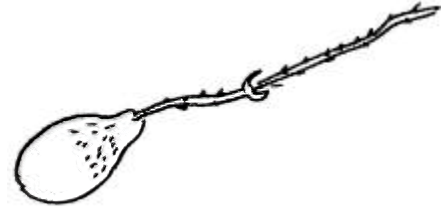

Although many yams often produce long flowers and both male and female flowers can be found on separate plants, these hardly ever produce true seeds that will grow. This is because of the different number of chromosomes that yams have, and it makes yam breeding almost impossible.

Planting practices
It is common practice in many areas to plant the yam piece upside down. The probable reason for this is to give the shoot and roots time to develop and get established away from the sun and wind so that the plant does not dry out. People in yam areas have their varieties classified as to whether they are planted at the top or the bottom of the hole, and whether the shoot is pointed up or downwards. The reasons for this are not fully understood but village people have probably learnt by experience.
Yams must have a well-drained soil with plenty of air in the soil. So, yams will not normally grow on heavy clay soils or in areas with a lot of soil moisture. The soil can be improved for yam growing by putting leaves and other plant material in the planting hole, by making a mound above the hole, or by planting on a hillside. In some very loose sandy soils such as near Port Moresby, yams can just be planted in flat unmounded soils without digging a special yam hole but these situations are not common.
Sticks for climbing up yams
Yams should also have sticks to climb up. It is best to have a stick that is twisted or branched because the vine can slip down a very straight stick. Normally a stick 2 metres tall is sufficient. It needs to be a strong stick, firmly fixed in the ground. Yam varieties vary on the type of vine growth they have. This affects where the stick needs to be placed.

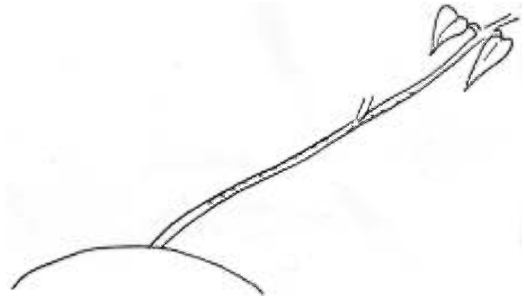
The fat irregular yams can have the sticks near the mound as a thick clump of vines and leaves soon develops. But if the stick is put beside the mound of one of the long ceremonial yams the vine will often reach the top of the stick before it has produced more than a couple of leaves, and will then fall back down to produce its leaves on the ground. The stick often needs to be put at some distance from the yam hole. The tip can be picked off the vine if branching is wanted earlier. It may be that the long vine yams are more common in forest areas and the shorter branched vines in grassland areas.
Planting without sticks
In some areas, yam vines are allowed to creep over the ground and do not have sticks to climb. This method only works satisfactorily in dry places like the Markhum Valley and Central District because diseases of the leaves and vine can cause serious damage in wetter places. Where yams do not have sticks to climb plants need to be more widely spaced. Under most circumstances, the amount of food produced can be doubled by allowing yam vines to climb up sticks.
Ceremonial yams
Potato yam vines are very long and heavy and it is often most easy to allow them to climb over logs or up trees.
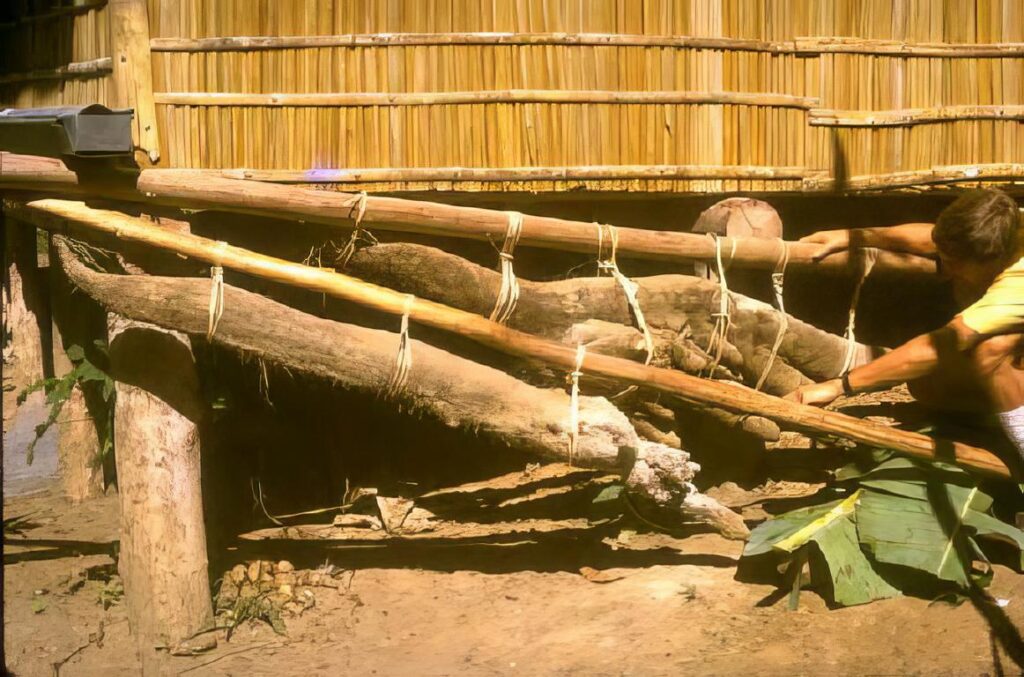
People in the Sepik area grow some of the largest yams in the world. They do this by putting together all the important principles of yam growing.
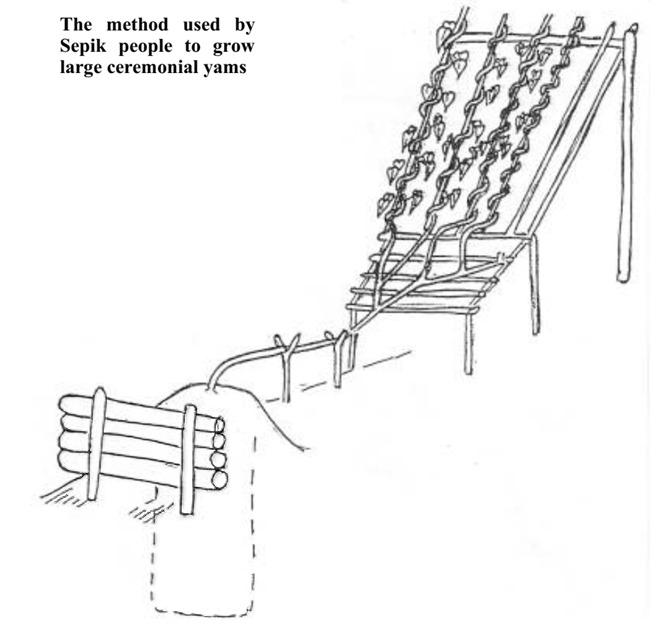
Ceremonial yams have very specialised production techniques. For general food production, use the top pieces of the tuber after they have sprouted, use a branched stick for support of the vine, space plants about 1 m apart and choose a smooth round cultivar. Given the large diversity of cultivars of greater yam, for efficient production varieties need to be chosen which have regular rounded tuber shapes for easier harvesting and preparation; also, selection needs to be made for varieties with less leaf spot and virus susceptibility and stable yield. Colour, cooking quality, storage ability, texture and other qualities need to be considered to suit the grower’s demands.
Pest and disease problems
The diseases of yams have not been well studied and are not well understood. Diseases on the leaves can be seen in almost all yam gardens and on all kinds of yams. Village people don’t understand about disease so say the leaves died off early because of “fire” or lightning, or because garden taboos were broken.
The diseases that have been listed so far include:
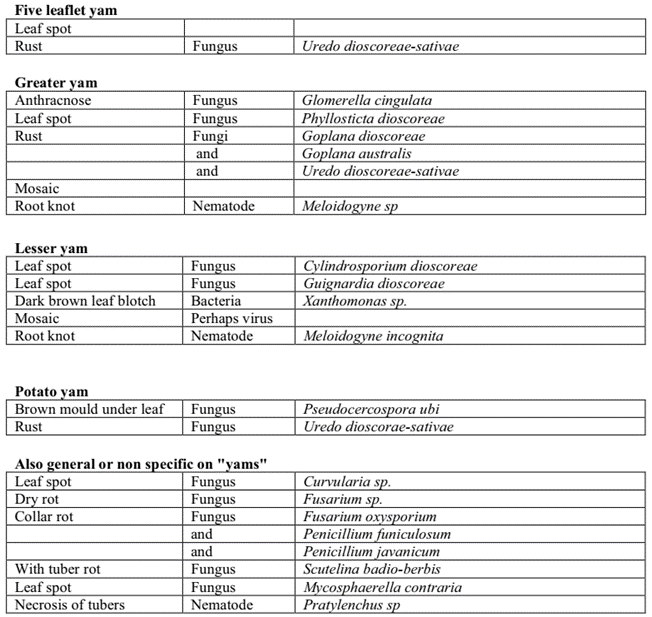
Anthracnose is caused by a common fungus and starts as spots but leaves and vines soon blacken and fall off.
Phyllosticta leaf spot has a dark brown ring around a light brown spot and often there is a hole in the centre.
Cercospora leaf spots tend to have a yellow ring around a brown dead spot.
These leaf spot diseases get worse in wet weather and under poor growing conditions. They often start on older leaves but can then spread to younger leaves and vines. There are a lot of obvious differences in the level of resistance to these diseases between the yam species and varieties. In some areas of Papua New Guinea, yam leaves develop mottled yellow patterns on the leaves and the vines stop growing. This disease is due to a virus.
Silvering of yam leaves. This can be due to a fungus called Botryodiplodia theobromae which is a very common fungus in Papua New Guinea and gets on many different plants. With greater yam, the leaves start to develop a silvery colour and start dying off early. This fungus gets bad in coastal areas where temperatures are about 30°C and when yams are not growing well.
Root rots of yams have also not been well studied in Papua New Guinea. Rotting of yam tubers either in the ground or in storage can occur due to a fungus that is common in Papua New Guinea (Botryodiplodia theobromae). It can cause wet rot, soft rot and brown dry rot. Handling tubers very carefully is important in stopping this disease.
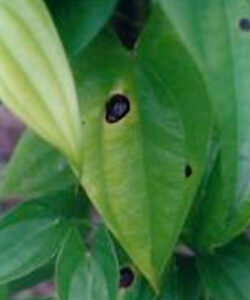


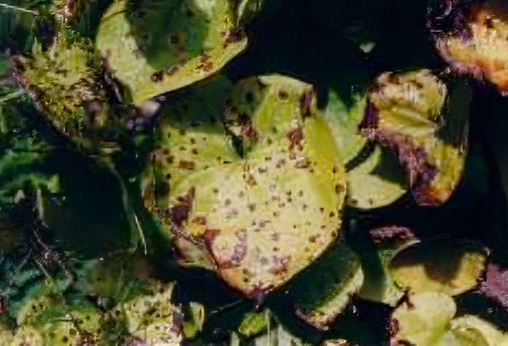
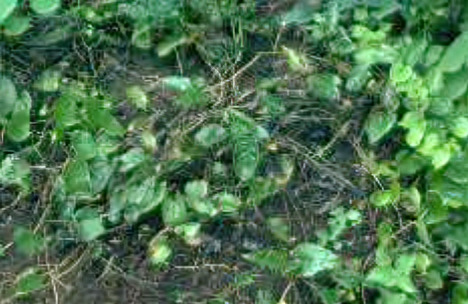

Insects on yams
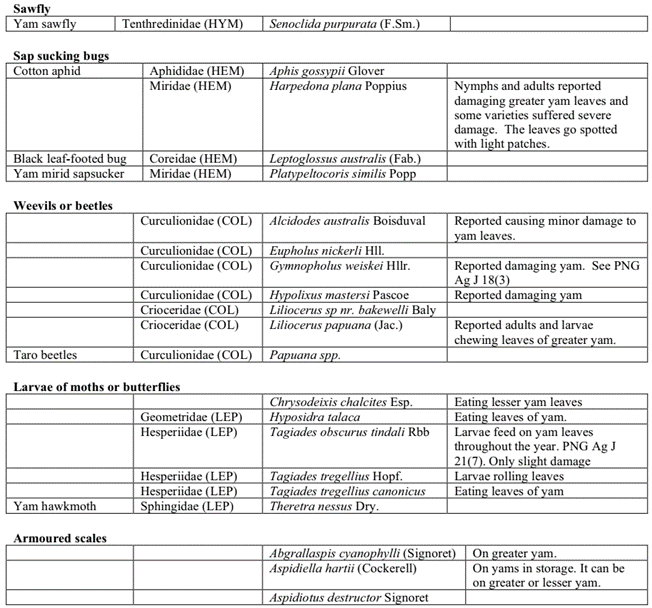

Yam hawkmoth

The larvae of a hawkmoth can be seen eating leaves in some yam gardens. It is a caterpillar with a long point on the end and it looks a bit like similar ones that are more commonly seen eating taro and sweet potato leaves. This one forms a pupae case in amongst the yam leaves and eventually hatches out to a moth.
Rats
Rats can be a big problem with stored yams unless the yams are well looked after.
________________________________________________________________________________________________________________
Text and all photos at this article © Food Plant Solutions. The professional background and contact information of the author of this article can be found here.
.



